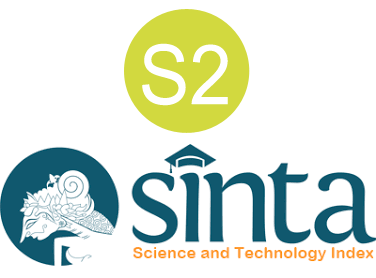Analisis Pementasan Tari Leko Pada Upacara Dewa Yadnya Di Banjar Tangkup, Desa Kedisan, Kecamatan Tegallalang, Kabupaten Gianyar
DOI:
https://doi.org/10.37329/jpah.v9i3.3678Keywords:
Leko Dance, Ceremony, Dewa YadnyaAbstract
The performance of the Leko Dance at the Dewa Yadnya ceremony in Banjar Tangkup, Kedisan Village, Tegallalang District, Gianyar Regency, has a uniqueness in terms of its performance and its existence is quite rare. This makes the Leko Dance important to study. In this study, the problems to be discussed are focused on two things, namely the reasons for performing the Leko Dance at the Dewa Yajnā ceremony in Banjar Tangkup and the form of the Leko Dance performance. This study uses a qualitative method. Data collection was carried out using observation techniques, in-depth interview techniques, and document study techniques. The technique used to analyze the data is verstehen. The results of the study show that the performance of the Leko Dance is based on the religious encouragement of the community which is based on sincere feelings called ngayah. Mythologically, the performance of the Leko Dance is believed by the Banjar Tangkup community to be a duwe sesuunan at Pura Puseh. The variety of movements and the structure of the presentation of the Leko Dance in Banjar Tangkup are very simple, delivered with soft, flexible and supple movements, consisting of the panglembar and pengipuk parts. In the Leko Dance, two characters appear, namely the male character and the female character. The male character in this case is the role of Natraduwa and the female character is the two nymphs who tempt Natraduwa in his hermitage.
References
Arini, A. A. A. K. (2011). Legong Peliatan: Pionir Promosi Kesenian Bali Yang Tetap Eksis. Denpasar: Swasta Nulus.
Bandem, I. M. (1991). Jurnal Pengetahuan dan Penciptaan Seni. Yogyakarta: ISI Yogyakarta.
Bandem, I. M. (1996). Etnologi Tari Bali. Yogyakarta: Kanisius.
Bandem, I. M. (2004). Kaja dan Kelod: Tarian Bali dalam transisi. Yogyakarta: ISI Yogyakarta.
Banoe, P. (2003). Kamus Musik. Yogyakarta: Kanisius.
Berger, A. A. (2010). Pengantar Semiotika: Tanda-Tanda Dalam Kebudayaan Kontemporer. Yogyakarta: Tiara Wacana.
Buningsih, A. (2005). Pembelajaran Moral Berpijak Pada Karakteristik Siswa Dan Budayanya. Jakarta: Rineka Cipta.
Burker, P. (2011). Sejarah dan Teori Sosial. Jakarta: Yayasan Pustaka Obor Indonesia.
Dana, I. W., & Arini, A. A. A. K. (2010). Leko Sibanggede: Tari Pergaulan yang Merakyat. Yogyakarta: Program Pascasarjana ISI Yogyakarta.
Dardjowidjojo, S. (2003). Psikolinguistik: Pemahaman Bahasa Manusia. Jakarta: Yayasan Obor Indonesia.
Desanto, D., & Cremers, A. (1997). Mitos Dukun & Sihir Claude Lévi-Strauss. Yogyakarta: Kanisius.
Dibia, I. W. (2014). Puspa Sari Seni Tari Bali. Denpasar: Jurusan Seni Tari, Fakultas Seni Pertunjukan, Institut Seni Indonesia Denpasar.
Djelantik, A. A. M. (2004). Estetika: Sebuah Pengantar. Bandung: MSPI.
Eliade, M. (2002). Mitos Gerak Kembali Yang Abadi: Kosmos dan Sejarah. Yogyakarta: Ikon Teralitera.
Fakih, M. (2003). Runtuhnya Teori Pembangunan Dan Globalisasi. Yogyakarta: ISIST Press.
Hadi, S. Y. (2006). Seni Dalam Ritual Agama. Yogyakarta: Pustaka Pelajar.
Jalaludin. (2004). Psikologi Agama. Jakarta: Rajawali Grafindo Persada.
Jazuli, M. (1994). Telaah Teoritis Seni Tari. Semarang: IKIP Semarang Press.
Kayam, U. (1981). Seni, Tradisi, Masyarakat. Jakarta: Sinar Harapan.
Koentjaraningrat. (1993). Kebudayaan, Mentalitas, dan Pembangunan. Jakarta: PT Gramedia.
Maran, R. R. (2007). Manusia Dan Kebudayaan Dalam Perspektif Ilmu Budaya Dasar. Jakarta: Rineka Cipta.
Nawawi, H. (2000). Interaksi Sosial. Jakarta: Gunung Agung.
Palmer, R. E. (2003). Hermeneutika: Teori Baru Mengenal Interpretasi. Yogyakarta: Pustaka Pelajar.
Putra, H. S. A. (2012). Strukturalisme Lévi-Strauss: Mitos dan Karya Sastra. Yogyakarta: Kepel Press.
Raho, B. (2021). Teori Sosiologi Modern (Edisi revisi). Maumere: Penerbit Ledalero.
Ranjabar, J. (2006). Sistem Sosial Budaya Indonesia: Suatu Pengantar (Cet. 1). Bogor: Ghalia Indonesia.
Ratna, N. K. (2004). Teori, Metode, Dan Teknik Penelitian Sastra: Dari Strukturalisme Hingga Postrukturalisme: Perspektif Wacana Naratif. Yogyakarta: Pustaka Pelajar.
Ritzer, G. (2012). Teori Sosiologi: Dari Sosiologi Klasik Sampai Perkembangan Terakhir Postmodern. Yogyakarta: Pustaka Pelajar.
Sadguna, I. G. M., & Sutirtha, I. W. (2015). Genggong dalam karawitan Bali: Sebuah Kajian Etnomusikologi. Segara Widya: Jurnal Penelitian Seni, 3.
Sagala, S. (2013). Memahami Organisasi Pendidikan: Budaya Dan Reinventing Organisasi Pendidikan. Bandung: Alfabeta.
Soedarsono, R. M. (1999). Seni Pertunjukan Indonesia dan Pariwisata. Bandung: Masyarakat Seni Pertunjukan Indonesia.
Suartini, N. M. (2018). Struktur tari dalam pertunjukan seni Gacle grup Satia Kulun di Kasepuhan Ciptagelar Desa Sinar Resmi Kecamatan Cisolok Kabupaten Sukabumi. Jurnal Ilmiah Seni Pertunjukan Tari Makalangan, 5(2), 41–49.
Suda, I. K. (2018). Membentuk Karakter Anak Melalui Seni Melukis. Denpasar: P.T. Japa Widya Duta.
Suhardana, K. (2010). Tat Twam Asi: Ajaran Kesamaan Martabat Manusia. Surabaya: Paramita.
Susanto, D. (2012). Pengantar Teori Sastra. Yogyakarta: CAPS.
Susilawati, A., & Sarpa. (1990). Deskripsi Tari Leko. Denpasar: Proyek Pembinaan Kesenian Bali, Kanwil Depdikbud Propinsi Bali.
Takari, M., Deliana, F., Fadlin, T. N., Naiborhu, T., Netriroza, A., & Dewi, H. (2008). Masyarakat Kesenian di Indonesia. Medan: Studia Kultura, Fakultas Sastra, Universitas Sumatera Utara.
Triguna, I. B. G. Y. (2000). Teori Tentang Simbol. Denpasar: Widya Dharma, Universitas Hindu Indonesia.
Twikromo, Y. A. (2006). Mitologi Kanjeng Ratu Kidul. Yogyakarta: Nidia Pustaka.
Wilkinson, P., & Philip, N. (2007). Mythology. London: Dorling Kindersley.
Downloads
Published
How to Cite
Issue
Section
License
Copyright (c) 2025 Ida Ayu Ketut Surya Wahyuni, Ni Made Dwi Ari Astuti, Ida Ayu Arniati

This work is licensed under a Creative Commons Attribution-ShareAlike 4.0 International License.
An author who publishes in the Jurnal Penelitian Agama Hindu agrees to the following terms:
- Author retains the copyright and grants the journal the right of first publication of the work simultaneously licensed under the Creative Commons Attribution-ShareAlike 4.0 License that allows others to share the work with an acknowledgement of the work's authorship and initial publication in this journal
- Author is able to enter into separate, additional contractual arrangements for the non-exclusive distribution of the journal's published version of the work (e.g., post it to an institutional repository or publish it in a book) with the acknowledgement of its initial publication in this journal.
- Author is permitted and encouraged to post his/her work online (e.g., in institutional repositories or on their website) prior to and during the submission process, as it can lead to productive exchanges, as well as earlier and greater citation of the published work (See The Effect of Open Access).
Read more about the Creative Commons Attribution-ShareAlike 4.0 Licence here: https://creativecommons.org/licenses/by-sa/4.0/.








